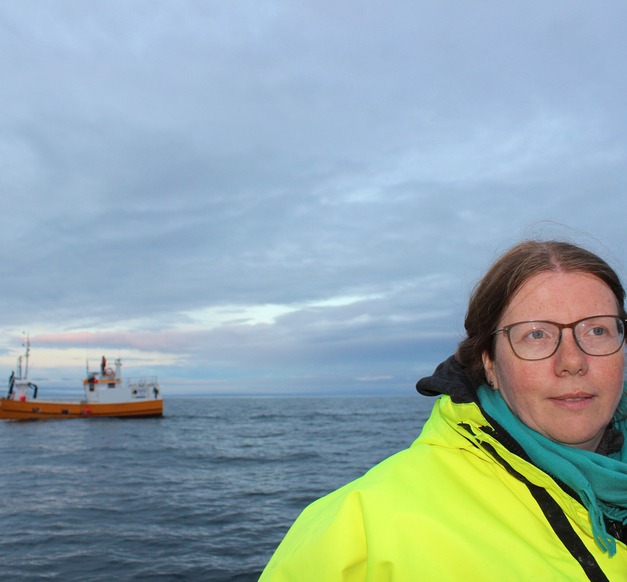
For just over half a century, seismic airguns have been the most commonly used equipment for locating oil and gas under the ocean floor. Seismic airguns release fast-moving and highly pressurised air bubbles under the sea. The air bubbles expand and contract in the ocean, forming sound waves that bounce off the seabed and provide data that can be used to create images of areas that would potentially be worth exploring.
The loud sounds may have a negative impact on the marine environment and ecosystems, not least on marine mammals such as whales. New instruments have been attracting attention that are likely to have a smaller impact on the biosphere than seismic airguns and are more environmentally friendly. Among these new solutions is the so-called marine vibrator, which has been the subject of a study over the past summers at the University of Iceland Research Centre in Húsavík.
"We want to look at whether this new equipment affects whales or changes their behaviour. Since the marine vibrator produces a quieter sound, it would be better if the oil and gas exploration industry could use this instead of airguns." So says Marianne Rasmussen, director of the University of Iceland Research Centre in Húsavík and prominent figure in Icelandic whale research.
The study is based on observing the reactions of blue whales to the sounds produced by the marine vibrator. A large number of blue whales can be found in the Skjálfandaflói bay over the summer months. The project is funded by the German Environment Agency and is being conducted in collaboration with the University of Veterinary Medicine Hannover. Tom Akamatsu from Japan also developed various technology used in the research.
"We want to look at whether this new equipment affects whales or changes their behaviour. Since the marine vibrator produces a quieter sound, it would be better if the oil and gas exploration industry could use this instead of airguns," says Marianne Rasmussen, director of the University of Iceland Research Centre in Húsavík and prominent figure in Icelandic whale research.

Tags attached to the whales using a boom and sucker
When the UI reporters went to observe the research team in Skjálfandi one fine summer night, the scientists pursued the whales in a small boat and attached tags to the animals using a long boom and sucker. If a whale was successfully tagged, the tag would automatically fall off after around 24 hours. While the tag was attached, it transmitted important data about the whale's behaviour and whether it was affected by the sounds.
"We have an array of hydrophones, one kilometre apart. Then we play a low frequency sound that the blue whales should be able to hear using a large underwater loudspeaker on a fishing vessel. The data we gathered gives us an idea of the whale's behaviour before we played the sounds, while they were playing and after they stopped. It provides important information about the whales' diving and vocalisations," says Marianne.
"For example, we monitored one blue whale for 24 hours and it was constantly feeding. It didn't stop feeding even when we were putting the tag on."
The new equipment seems to have a minimal impact
The German scientist Joseph Schnitzler has spent the last few summers in Skjálfandi involved with the research project, which concluded in July this year. He works at University of Veterinary Medicine Hannover.
"We saw some minor responses to the sound and also a slight effect on the call behaviour of the whales. That might be the main effect of this marine vibrator," says Schnitzler.
Marianne explains that although the blue whales did not change their feeding behaviour in response to the sound, they increased their call behaviour after the marine vibrator was turned off.


